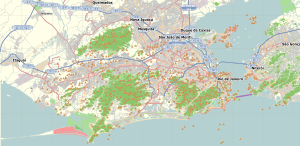
Botafogo is a beachfront neighborhood (bairro) in Rio de Janeiro, Brazil. It is a mostly upper middle class and small commerce community, and is located between the hills of Mundo Novo, Dona Marta and São João. The word Botafogo also refers to a Latin American ballroom dance move that originated in this area.

Japanese Brazilians are Brazilian citizens who are nationals or naturals of Japanese ancestry or Japanese immigrants living in Brazil or Japanese people of Brazilian ancestry. Japanese immigration to Brazil peaked between 1908 and 1960, with the highest concentration between 1926 and 1935. In 2022, Japan’s Ministry of Foreign Affairs stated that there were 2 million Japanese descendants in Brazil, making it the country with the largest population of Japanese origin outside Japan. However, in terms of Japanese citizens, Brazil ranked seventh in 2023, with 46.9 thousand Japanese citizens. Most of the Japanese-descendant population in Brazil has been living in the country for three or more generations and most only hold Brazilian citizenship. Nikkei is the term used to refer to Japanese people and their descendants.

Lúcio Marçal Ferreira Ribeiro Lima Costa was a Brazilian architect and urban planner, best known for his plan for Brasília.

The Corcovado Rack Railway is a mountain rack railway in Rio de Janeiro, Brazil, from Cosme Velho to the summit of Corcovado at an elevation of 710 m (2,329 ft). The summit is famous for its giant statue of Christ the Redeemer and for its views over the city and beaches.

Associação Atlética Portuguesa, also known as Portuguesa Carioca, Portuguesa do Rio or Portuguesa da Ilha, and also nicknamed Lusa, is a Brazilian professional association football club based in Governador Island, Rio de Janeiro. The team plays in Série D, the fourth tier of the Brazilian football league system, as well as in the Campeonato Carioca, the top tier of the Rio de Janeiro state football league.

Laranjeiras is an upper-middle-class neighborhood located in the South Zone of Rio de Janeiro, Brazil. Primarily residential, It is one of the city's oldest neighborhoods, having been founded in the 17th century, with the construction of country houses in the valley located around the Carioca River, which bordered Corcovado Mountain. Because of this, the neighborhood was previously called Vale do Carioca, or Carioca Valley.
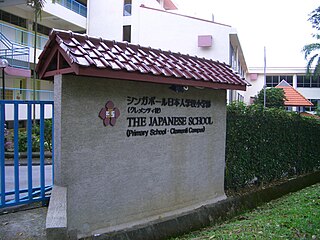
Nihonjin gakkō, also called Japanese school, is a full-day school outside Japan intended primarily for Japanese citizens living abroad. It is an expatriate school designed for children whose parents are working on diplomatic, business, or education missions overseas and have plans to repatriate to Japan.

Santa Teresa is a neighborhood in the city of Rio de Janeiro, Brazil. It is located on top of the Santa Teresa hill, by the centre of Rio, and is famous for its winding, narrow streets which are a favourite spot for artists and tourists.
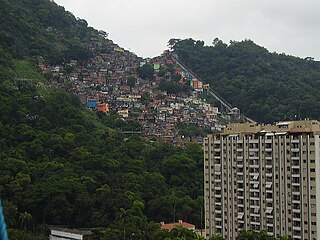
Favela Santa Marta is a favela located in the Botafogo and Laranjeiras part of the Morro Dona Marta, that is also divided with the neighborhoods of Flamengo, Cosme Velho and Silvestre, in the South Zone of Rio de Janeiro, Brazil. It has about 3,913 residents and 1,287 domiciles, with 500 wooden houses, 2,000 brick houses, 4 kindergartens, 3 bakeries, 2 sports fields, 1 block of a samba school, 3 military units and 1 small market. The favela is one of the steepest in the city, with an altitude of 352 metres (1,155 ft), approximately 45 degrees of inclination and occupies an area equivalent to 53,706 square metres (578,090 sq ft).

The South Zone is an area of the city of Rio de Janeiro situated between the Tijuca Massif, the Atlantic Ocean and Guanabara Bay. Most of it is made up of neighborhoods along the Atlantic coastline, such as São Conrado, Vidigal, Leblon, Ipanema, Copacabana, and Leme.

Largo do Machado is a square located on the border of the Catete, Flamengo and Laranjeiras neighborhoods in the city of Rio de Janeiro, Brazil.

The single largest Japanese diaspora in any city is in São Paulo. In 1958, the census counted 120,000 Japanese in the city and by 1987, there were 326,000 with another 170,000 in the surrounding areas within São Paulo state. As of 2007, the Paulistano Japanese population outnumbered their fellow diaspora in the entirety of Peru, and in all individual American cities.

Largo do Machado Station is an underground station on the Rio de Janeiro Metro that services the neighbourhoods of Catete, Laranjeiras, Cosme Velho and Largo do Machado in the South Zone of Rio de Janeiro. It is located near the Estádio das Laranjeiras.
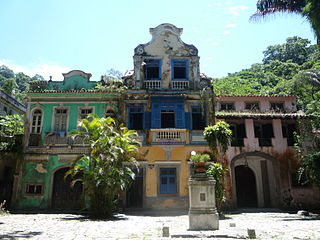
The Largo do Boticário is a square in the Cosme Velho neighborhood of the city of Rio de Janeiro in Brazil. The square can be reached by the Beco do Boticário, that passes by the Carioca River. The area is characterized by large, neo-colonial houses and Atlantic Forest vegetation.
Associação Civil de Divulgação Cultural e Educacional Japonesa do Rio de Janeiro is a Japanese international school in Cosme Velho, Rio de Janeiro, Brazil.

Instituto Educacional Centro Nippo Brasileiro is a Brazilian school in Oizumi, Gunma which serves kindergarten through 12th grade.
C.E.P. Mundo de Alegría is a Peruvian international school in Chūō-ku, Hamamatsu, Japan. The school, which has primary and secondary levels, uses Spanish as the medium of instruction. In 2013 the Embassy of Peru celebrated the school's 10 year anniversary.
Escola Alegria de Saber is a network of Brazilian international schools in Japan. It has campuses in Aichi, Gunma, Mie, and Shizuoka prefectures. The campuses, which have about 2,000 students as of 2015, serve the ensino fundamental and ensino médio levels.
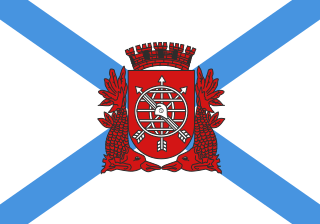
The following outline is provided as an overview of and topical guide to Rio de Janeiro:

The Queen's Fountain is a fountain located in the Cosme Velho neighborhood, in the South Zone of Rio de Janeiro, Brazil. It is situated on Cosme Velho Street, near the Cosme Velho Station of the Corcovado Train.

